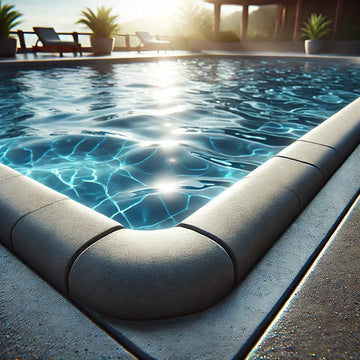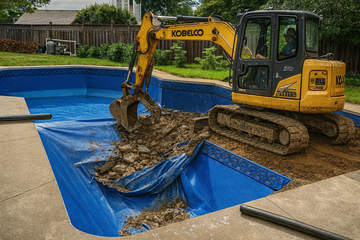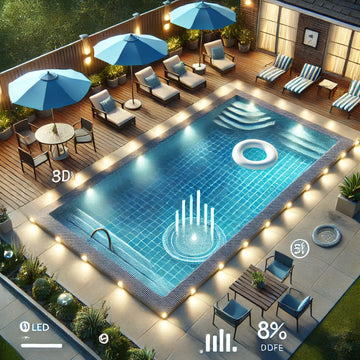WHY POOL COPING IS CRUCIAL TO PREVENT THE NEED FOR POOL CONCRETE REPAIRS
If you plan to renovate or install an in-ground swimming pool, you will need to explore your pool coping options. Pool coping is an absolute necessity for in-ground swimming pools and here’s why.
Pool coping provides both functional and aesthetic benefits for your pool. It protects your pool’s structure while adding a decorative finishing to complete your pool installation or renovations. With the right coping for your pool, you can avoid the need to repair pool concrete that has experienced exposure to pool water and other elements over time.
FUNCTIONAL BENEFITS OF COPING
All in-ground swimming pools require coping—the material used for edging or capping a pool’s shell wall. Coping protects the pool’s structure, especially behind the shell wall, maintaining its structural integrity. Its main functional purpose is to prevent water from getting behind the wall.
During installation, a pool builder will mount the coping on top of the pool’s bond beam. The coping will cover the pool’s concrete edges and hide the steel in the pool’s walls. Since coping acts as a barrier, preventing water from reaching behind the pool shell, it will be tilted slightly away from the pool. This tilt will direct splashed pool water away from the pool and into the deck drains.
Depending on the materials used, coping can also provide a non-slip surface for swimmers to safely walk on around the pool.
AESTHETIC DESIGN OPTIONS FOR COPING
For aesthetic purposes, coping hides the inner structure of the pool while bringing together the tiles and finishing of the pool. The result is a complete and attractive appearance.
Popular coping materials include precast concrete for corners, curved sections, and straight lines. Precast coping stones are usually a greyish-white porous concrete, however, you can opt for coloured and stamped concrete.
Common styles for concrete coping include:
- Bullnose coping—smooth, rounded edges;
- Square-edge coping—straight, square edges; and,
- Rebated coping—also known as drop-face coping, with a front edge that drops down.
Aside from precast concrete, there are also other various designs and materials used for coping to suit a variety of pool design preferences, such as:
- Flagstone
- Brick
- Tile
- Natural stone
- Synthetic decking
- Concrete or wood decking that extends to—or just over—the pool’s edge.
Common coping styles for vinyl-lined in-ground pools include:
- Cantilever-edge coping—comes right up to and over the pool’s edge
- Flat-mount coping—uses a track to contain the vinyl liner, with traditional coping stone installed on top
- Top-mount coping—the pool deck is poured against a heavy aluminum form which is attached to the pool wall.
Avoid the need for concrete pool repairs and consider the many pool coping options. Depending on your design preferences and budget, your pool builders can help you find the right coping to keep your pool protected and looking great.




